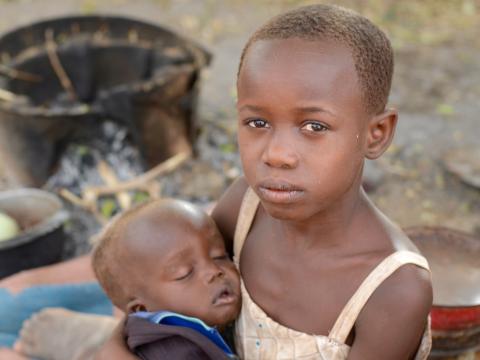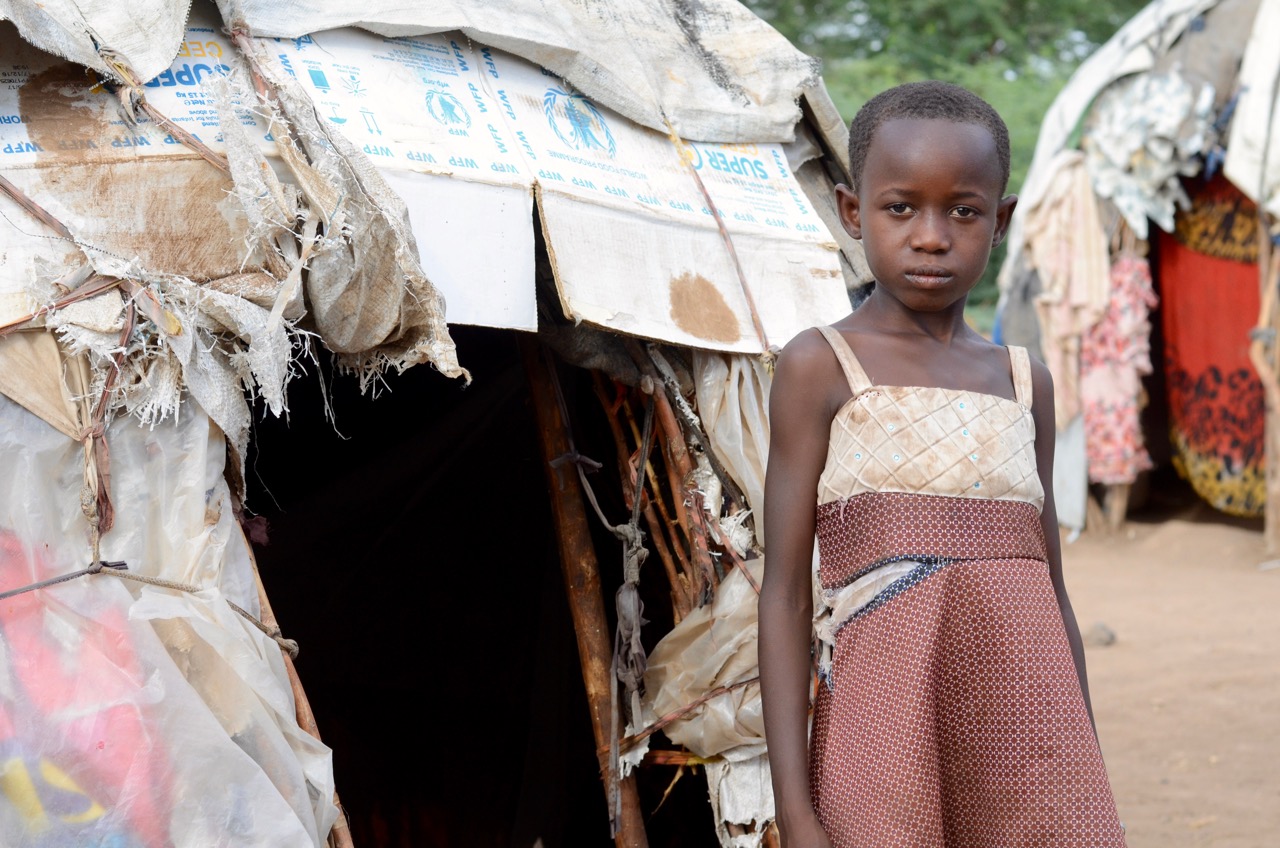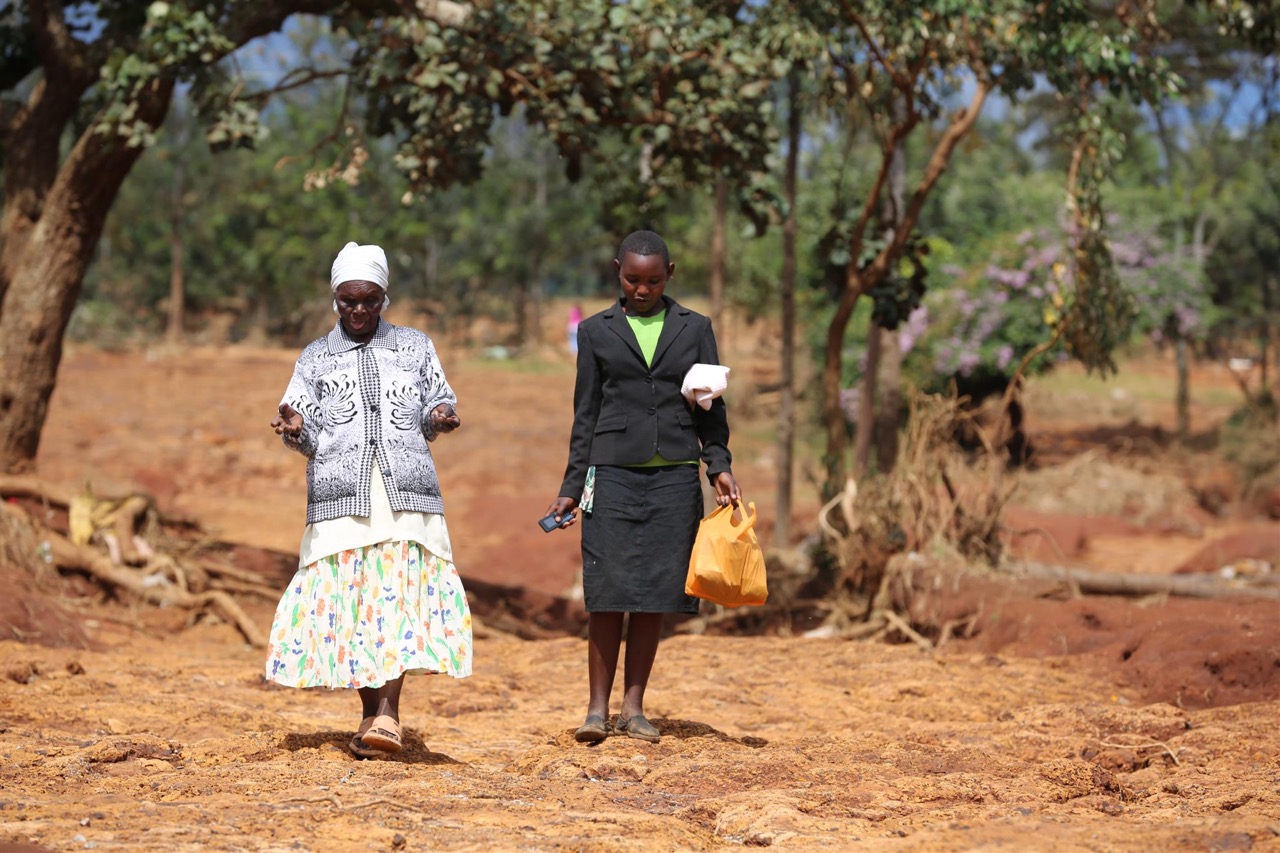Disaster after disaster putting girls in eastern Africa at risk

The Horn of Africa has been hit by a series of natural disasters during the last two years. In 2017, a widespread drought affected millions of families in Ethiopia, Somalia and Kenya.
In 2018, many of the same areas – which had not rebounded yet – were affected by devastating floods. The subsequent natural disasters have forced more than 2 million people to abandon their homes.
For girls in particular, natural disasters can lead to devastation that lasts a lifetime.
“Natural disasters lead to an increase in the vulnerability children face. Girls specifically are at a higher risk of dropping out of school, partaking in child labour, being married early, being sexually exploited, becoming pregnant and finding other negative coping mechanisms. After natural disasters, we often see an increase in the numbers of children on the streets who left their homes to seek livelihood opportunities in towns and cities,” says Tina Berwa Ojuka, a World Vision Technical Advisor on Child Protection and Participation, based in East Africa.
Eight-year-old Lochero witnessed 180 of her family’s goats starve to death last year after rain failed, grass withered and water points dried up due to drought. Forced to abandon their way of life, Lochero followed her mom and two younger siblings to the nearest urban centre.
In Kakuma, in northern Kenya, Lochero and her mom set up a tiny hut made of branches and mud on the outskirts of an 180,000 person refugee camp. Lochero’s mother Monica begged the refugees to buy bundles of thorn branches in return for a cup full of maize meal to feed her children at night.
Every morning, Lochero was left to care for her five-year-old sister and one-year-old brother while Monica left to hack thorn trees from the bush and bring them to the refugee camp.
“I hate the way we live as a family,” Lochero said. “When I wake up early in the morning, I come to our neighbours’ compound. I see children arrange themselves to go to school. I tell my mother everyday that I want to go to school, but she tells me ‘who will take of my brother and sister’?”
Some months later, in another part of Kenya, girls like 16-year-old Peninah were reeling after a flash flood destroyed communities.
“After 30 minutes, our house had been swept away by the flooding waters,” Peninah remembers.
Their family’s crops were destroyed and all their belongings lost – leaving Peninah and thousands of other girls wondering what they would eat, where they would sleep and how they could continue to stay in school in the months to come.
Drought in Somaliland has created similar hardships for girls. Seven-year-old Fardawsa and her mom were forced to abandon their home and move to a settlement for displaced people.
Fardawsa and her mom scraped together a few branches to create a makeshift shelter, but relied on handouts from their neighbours for food. Even with rain, months later, all means are exhausted for recovery.
Without any income, Fardawsa can’t start her education either. The cost of a simple notebook or a school uniform is too expensive for a family who has lost everything.
“Nothing is worse as being a displaced family,” says Fardawsa’s mom Hinda.
In Ethiopia, failed crops led 15-year-old Nejuma to drop out of school because her family no longer had income to pay for food, school supplies or clothes.
“I had to support my mother with some house chores because my father went in search of daily labour,” Nejuma says.
Keeping girls from school or forcing them to drop out before they have finished primary school greatly increases the chances that the cycle of poverty will be passed on to the next generation, Tina warns.
“When girls go to school and finish their education, they have more self confidence. Research has proven that girls who are educated are more economically productive, healthier and safer, which disrupts poverty from being passed down to the next generation,” says Tina.
World Vision has responded to the needs of people affected by drought and flooding in Ethiopia, Kenya and Somalia and helped reduce the impact on farmers and pastoralists by giving them the skills and support to keep their animals alive and crops growing by setting up irrigation schemes, digging wells, extending water pipelines and providing drought-resistant seeds. Drought-affected children are also supported to stay in school through the distribution of school supplies and provision of daily school meals.
“Still, there’s more to do. We need to ensure families have the ability to survive crisis and have income so that their children’s lives are not disrupted and devastated,” Tina says.
- with files from Lillian Omariba, Kelvin Kagiri and Zipporah Karani



